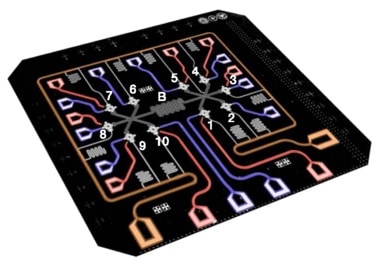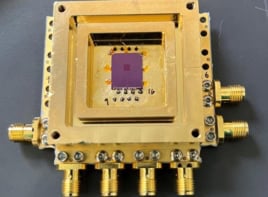
Physicists in China and the US have built a 10-qubit superconducting quantum processor that could be scaled up to tackle problems not solvable by classical computers. The performance of the device was verified using quantum tomography, which showed that the new approach can generate a true 10-partite Greenberger–Horne–Zeilinger (GHZ) state – the largest yet achieved in a solid-state system.
The field of quantum computing is in its infancy, and a genuinely useful, practical device that outperforms classical computers has not yet been built. At this stage of development, researchers do not even agree on the basics of implementation, but techniques employing superconducting circuits have an advantage over some other designs in that they are based on established and scalable microfabrication processes.
Robust to noise
Writing in Physical Review Letters, a multi-institution collaboration led by Jian-Wei Pan of the University of Science and Technology of China, Shanghai, report a superconducting architecture in which information is encoded as transmons – a form of charge qubit especially robust to noise. The team used a bus resonator to mediate qubit–qubit coupling, and showed that a single collective interaction could produce a 10-qubit GHZ state from initially non-entangled qubits.
Pan and colleagues propose that the efficient generation of entanglement, and the ability to operate on different qubit pairs in parallel, make their approach a promising route to achieving a large-scale quantum computer.



